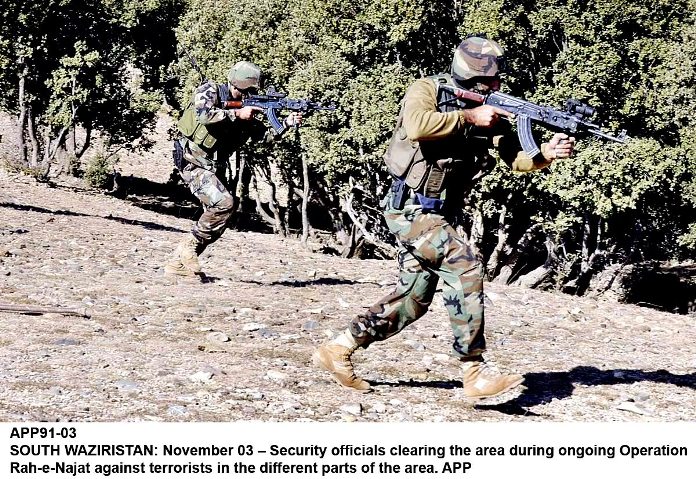 |
| COAS Pakistan Army Visiting SSG Troops |
A Patriotic Blog. Focused On Positive Aspects Of Pakistani Society And Its People. Discussion About Love For Motherland Pakistan, Its Culture, History And Future. Pakistan Is Truly The Mamlikat-e-Khudadad. Strategic Importance Of Location Of Pakistan As A Muslim State And As A Leader Of Muslim Ummah. Stories Of Bravery Of Martyrs Of Pakistani Armed Forces Army, Navy And Air Force Who Sacrificed Their Lives For This Country.
Friday, October 31, 2014
Thursday, October 30, 2014
Wednesday, October 29, 2014
Pak Army SSG In Operation Rah-e-Nijat
Security Officials Of Special Services Group Clearing The Area During On Going Operation Rah-e-Nijat Against Terrorists In The Different Parts Of The Area.
[ South Waziristan ]
[ South Waziristan ]
Tuesday, October 28, 2014
Sunday, October 26, 2014
Saturday, October 25, 2014
Pakistan Air Force 1947 To 1950 Age Of Glory
The Royal Pakistan Air Force (RPAF) was established on 14 August 1947 with the independence of Pakistan from British raj. The Royal Pakistan Air Force RPAF began with 2,332 personnel, a fleet of 24 Tempest II fighter-bombers, 16 Hawker Typhoon fighters, two H.P.57 Halifax bombers, 2 Austeraircraft, twelve North American Harvard trainers and ten de Havilland Tiger Moth biplanes. It also got eight C-47 Dakota cargo planes which it used to transport supplies to soldiers fighting in the 1947 War in Kashmir against India. However, it never received all the planes it was allotted at the time of independence of South Asia. It started with 7 operational airbases scattered all over the provinces.
Operating these inherited aircraft was far from ideal in Pakistan's diverse terrains, deserts and mountains; frequent attrition and injuries did not make the situation any better. However, by 1948 the air force acquired better aircraft such as the Hawker Sea Fury fighter-bomber and the Bristol Freighter. These new aircraft gave a much-needed boost to the morale and combat capability of the Royal Pakistan Air Force; 93 Hawker Fury and roughly 50-70 Bristol Freighter aircraft were inducted into the RPAF by 1950.
Although the Royal Pakistan Air Force had little funds to use and markets to choose from, it entered the jet age quite early.
 |
| JF-17 Pakistan Air Force |
Although the Royal Pakistan Air Force had little funds to use and markets to choose from, it entered the jet age quite early.
 |
| Pakistan Air Force 1947 To 1950 |
Friday, October 24, 2014
Nuclear Weapons Program Of Pakistan Introuction
 |
| Nuclear Weapons Program Of Pakistan |
Pakistan began focusing on nuclear weapons development in
January 1972 under the leadership of Prime Minister Zulfiqar Ali Bhutto, who
delegated the program to the Chairman of PAEC Munir Ahmad Khan. In 1976, Abdul
Qadeer Khan also joined the nuclear weapons program, and, with Zahid Ali Akbar,
headed the Kahuta Project, while the rest of the program being run in PAEC and
comprising over twenty laboratories and projects was headed by nuclear
engineer, Munir Ahmad Khan. This program would reach fruition under President
General Muhammad Zia-ul-Haq, then-Chief of Army Staff. Pakistan's nuclear
weapons development was in response to neighboring India's development of its
nuclear programme. Bhutto called a meeting of senior scientists and engineers
on 20 January 1972, in Multan, which came to known as "Multan
meeting". Bhutto was the main architect of this programme and it was here
that Bhutto orchestrated nuclear weapons programme and rallied Pakistan's
academic scientists to build the atomic bomb for national survival. At the
Multan meeting, Bhutto also appointed Munir Ahmad Khan as chairman of Pakistan
Atomic Energy Commission (PAEC), who, until then, had been working as Director
at the nuclear power and Reactor Division of the International Atomic Energy
Agency (IAEA), in Vienna, Austria. In December 1972, Abdus Salam led the
establishment of Theoretical Physics Group (TPG) as he called scientists
working at ICTP to report to Munir Ahmad Khan. This marked the beginning of
Pakistan's pursuit of nuclear deterrence capability. Following India's surprise
nuclear test, codenamed Smiling Buddha in 1974, the first confirmed nuclear
test by a nation outside the permanent five members of the United Nations
Security Council, the goal to develop nuclear weapons received considerable
impetus.
Subscribe to:
Posts
(
Atom
)



